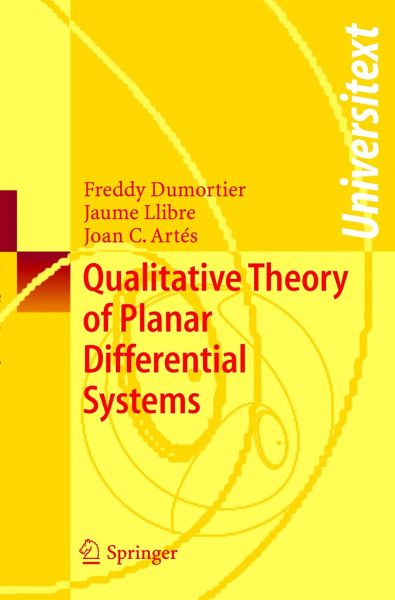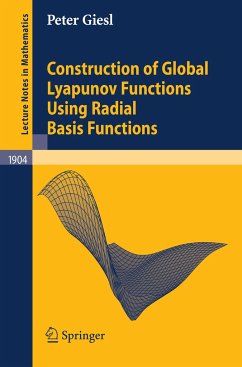
Qualitative Theory of Planar Differential Systems

PAYBACK Punkte
29 °P sammeln!
This book deals with systems of polynomial autonomous ordinary differential equations in two real variables. The emphasis is mainly qualitative, although attention is also given to more algebraic aspects as a thorough study of the center/focus problem and recent results on integrability. In the last two chapters the performant software tool P4 is introduced. From the start, differential systems are represented by vector fields enabling, in full strength, a dynamical systems approach. All essential notions, including invariant manifolds, normal forms, desingularization of singularities, index theory and limit cycles, are introduced and the main results are proved for smooth systems with the necessary specifications for analytic and polynomial systems.
Our aim is to study ordinary di?erential equations or simply di?erential s- tems in two real variables x ? = P(x,y), (0.1) y? = Q(x,y), r 2 where P and Q are C functions de?ned on an open subset U of R , with ? r=1,2,...,?,?.AsusualC standsforanalyticity.Weputspecialemphasis onto polynomial di?erential systems, i.e., on systems (0.1) where P and Q are polynomials. Instead of talking about the di?erential system (0.1), we frequently talk about its associated vector ?eld ? ? X = P(x,y) +Q(x,y) (0.2) ?x ?y 2 on U? R . This will enable a coordinate-free approach, which is typical in thetheoryofdynamicalsystems.Anotherwayexpressingthevector?eldisby writingitasX=(P,Q).Infact,wedonotdistinguishbetweenthedi?erential system (0.1) and its vector ?eld (0.2). Almost all the notions and results that we present for two-dimensional di?erential systems can be generalized to higher dimensions and manifolds; but our goal is not to present them in general, we want to develop all these notions and results in dimension 2. We would like this book to be a nice introduction to the qualitative theory of di?erential equations in the plane, providing simultaneously the major part of concepts and ideas for developing a similar theory on more general surfaces and in higher dimensions. Except in very limited cases we do not deal with bifurcations, but focus on the study of individual systems.














